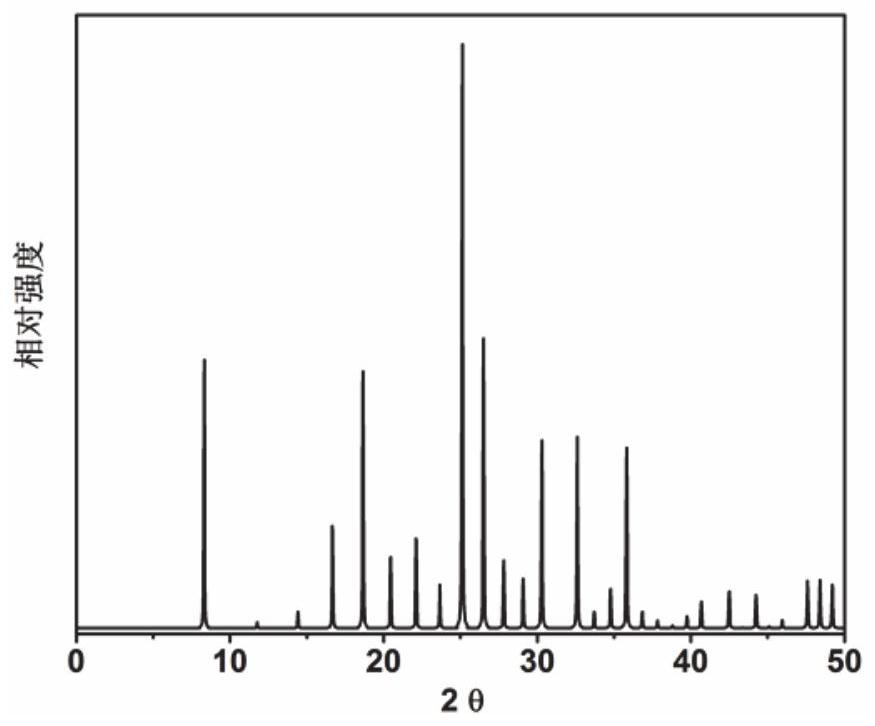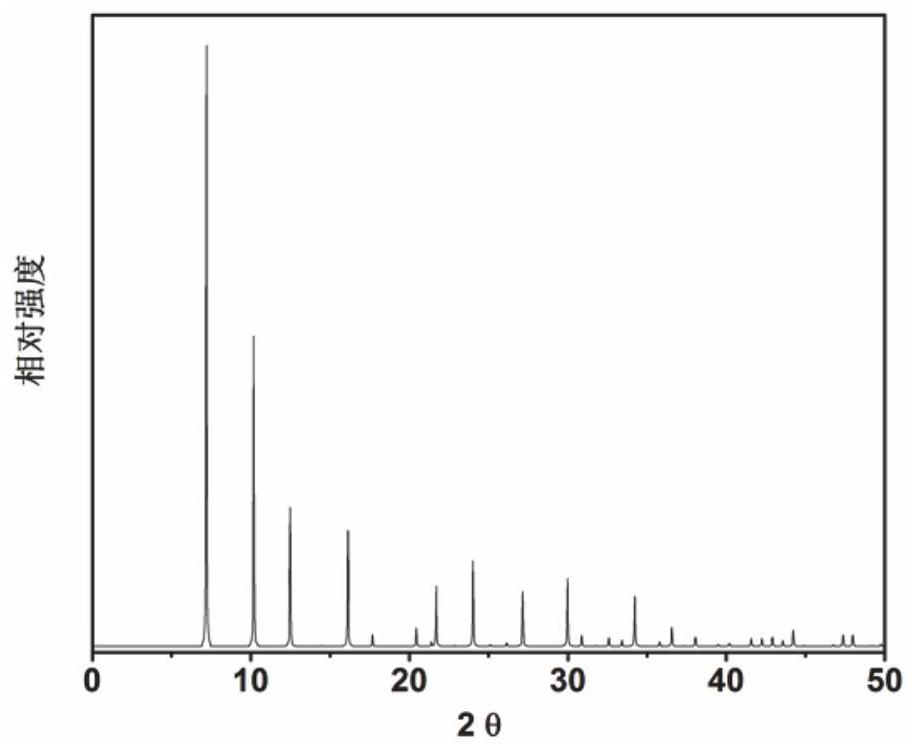Method for preparing coronene compound by using molecular sieve catalyst
A molecular sieve and catalyst technology, applied in the field of chemical preparation, can solve the problems of unstable intermediate products and inconvenient industrialization, and achieve the effect of being suitable for large-scale production, low cost, and easy to obtain raw materials
- Summary
- Abstract
- Description
- Claims
- Application Information
AI Technical Summary
Problems solved by technology
Method used
Image
Examples
Embodiment 1
[0053] Embodiment 1: the synthesis of DNL-6 molecular sieve catalyst
[0054] Initial gel molar composition ratio 2N-methylbutylamine (as organic structure directing agent): 0.3SiO 2 : 0.4P 2 o 5 : 0.5Al 2 o 3 : 50H 2 O: 0.2 (20%) cetyltrimethylammonium bromide (as seed crystals) Mix measured amounts of organic structure directing agent, silica sol, phosphoric acid, aluminum isopropoxide, deionized water, and seed crystals in a beaker , fully stirred to form a gel, then loaded into a stainless steel autoclave lined with polytetrafluoroethylene, and rotated and crystallized at a constant temperature of 200°C at a speed of 75r / min for 24h. After crystallization, use a centrifuge at 3000 rpm for 3 minutes, wash the separated solid product with deionized water to neutrality, and dry it overnight in air at 120°C. The results of XRD analysis are as follows: figure 1 shown. From figure 1 It can be seen from the results that the synthesized product is the raw powder of DNL-6 m...
Embodiment 2
[0055] Embodiment 2: the synthesis of SAPO-42 molecular sieve catalyst
[0056] Based on the initial gel molar composition ratio of 1.85 2,2-dimethyl-2,3-dihydro-1H-phenyl[de]isoquinoline (as an organic structure-directing agent): 0.296SiO 2 : 0.85P 2 o 5 : 1Al 2 o 3 : 60H 2 O Mix the metered organic structure-directing agent, silica sol, phosphoric acid, pseudoboehmite and deionized water in a beaker, stir well to form a gel, and then put it into a stainless steel autoclave lined with polytetrafluoroethylene. Constant temperature crystallization at 175℃ for 120h. After crystallization, use a centrifuge at 3000 rpm for 3 minutes, wash the separated solid product with deionized water until it is neutral, and dry it overnight in air at 100°C. The results of XRD analysis are as follows: figure 2 shown. From figure 2 It can be seen from the results that the synthesized product is the original powder of SAPO-42 molecular sieve, and the original powder was calcined at 600°...
Embodiment 3
[0057] Embodiment 3: the synthesis of ZK-21 molecular sieve catalyst
[0058] 6.1g sodium aluminate (1.11Na 2 O·Al 2 o 3 3.5H 2 0) mix with a small amount of deionized water, add 23g concentration of 85% phosphoric acid, be made into 220ml aqueous solution, add 10.3g sodium metasilicate pentahydrate and 80ml deionized water while stirring, the gel obtained after fully stirring, then Put it into a stainless steel autoclave lined with polytetrafluoroethylene, and crystallize at a constant temperature of 100°C for 69h. After crystallization, use a centrifuge at 3000 rpm for 3 minutes, wash the separated solid product with deionized water until it is neutral, and dry it overnight in air at 100°C. The results of XRD analysis are as follows: image 3 shown. From image 3 It can be seen from the results that the synthesized product is ZK-21 molecular sieve raw powder, and the raw powder is calcined at 600°C for 5 hours to obtain ZK-21 molecular sieve, which is designated as cat...
PUM
 Login to View More
Login to View More Abstract
Description
Claims
Application Information
 Login to View More
Login to View More - R&D
- Intellectual Property
- Life Sciences
- Materials
- Tech Scout
- Unparalleled Data Quality
- Higher Quality Content
- 60% Fewer Hallucinations
Browse by: Latest US Patents, China's latest patents, Technical Efficacy Thesaurus, Application Domain, Technology Topic, Popular Technical Reports.
© 2025 PatSnap. All rights reserved.Legal|Privacy policy|Modern Slavery Act Transparency Statement|Sitemap|About US| Contact US: help@patsnap.com



